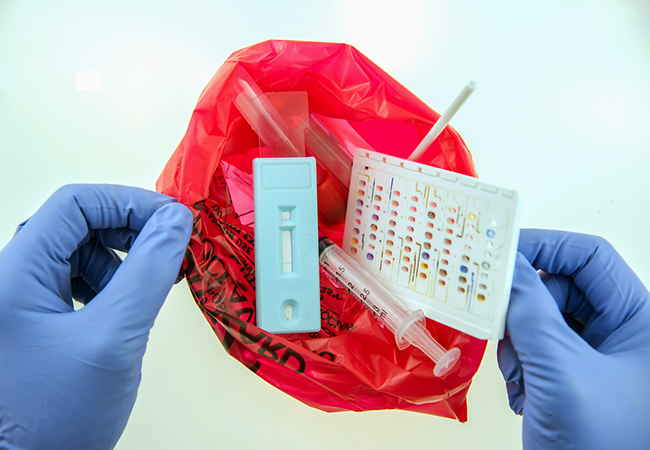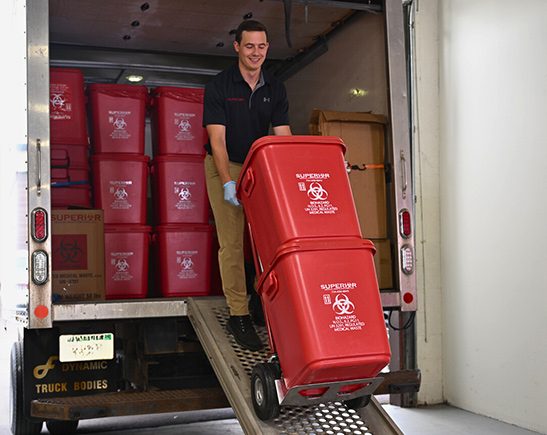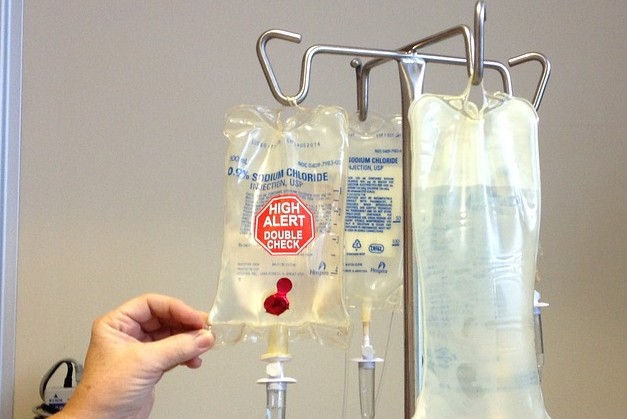Security First: Your Overview to Accountable Medical Waste Removal Services
Security First: Your Overview to Accountable Medical Waste Removal Services
Blog Article
Remain Ahead of Regulations: Specialist Guidance on Medical Waste Disposal
In a world where the medical care industry is continuously progressing, it is essential for medical centers to remain in advance of laws when it pertains to the appropriate disposal of medical waste. With strict standards and regular governing adjustments, it can be testing to browse the complexities of this procedure. Nonetheless, with experienced suggestions, centers can guarantee conformity and reduce threats linked with improper waste disposal. From recognizing the various classifications of clinical waste to applying the best collection and segregation approaches, this conversation will certainly supply beneficial insights and workable ideas to assist centers stay ahead of guidelines in the ever-changing landscape of clinical waste disposal.
Recognizing Clinical Waste Categories
Understanding medical waste classifications is essential for correct disposal and administration in health care facilities. Medical waste refers to any kind of waste generated by health care activities that may present a danger to public health or the setting. It is essential to classify medical waste properly to ensure its risk-free handling, disposal, therapy, and transportation.
There are several classifications of medical waste that health care centers need to be knowledgeable about. One of the most common groups consist of transmittable waste, pathological waste, sharps waste, pharmaceutical waste, and chemical waste. Each category has details guidelines and guidelines for its proper administration and disposal.
Pathological waste refers to human tissues, body organs, or body components that require unique handling and disposal. Pharmaceutical waste comprises run out, unused, or infected medicines that require careful handling and disposal.
Staying Up-To-Date With Regulatory Adjustments
Remaining current with governing changes is crucial for health care centers to ensure compliance and correct management of clinical garbage disposal. medical waste removal service. With laws frequently evolving, it is crucial for health care facilities to remain up-to-date to avoid charges, penalties, and possible injury to the environment and public wellness
To stay in advance of governing modifications, medical care facilities ought to establish a system for surveillance and monitoring updates. This can be done by registering for governing e-newsletters, participating in workshops and seminars, and proactively taking part in industry associations. In addition, facilities should designate a staff member or team in charge of staying educated and sharing details to relevant stakeholders.
Normal communication with regulative companies is also vital. Medical care facilities ought to establish partnerships with regional, state, and federal agencies to guarantee they are conscious of any changes in guidelines that might influence their waste administration techniques. This can be done via regular conferences, participation in public remark durations, and positive involvement with regulative firms.
In addition, health care facilities should take into consideration partnering with waste management firms that specialize in clinical garbage disposal (medical waste disposal services with WasteX). These firms are usually skilled in the most up to date regulations and can offer support and assistance to make sure compliance
Applying Correct Collection and Partition Techniques
To successfully handle medical waste disposal, healthcare centers need to develop appropriate collection and segregation techniques in accordance with regulative guidelines. Carrying out these techniques guarantees the risk-free handling and disposal of possibly harmful materials, protects the environment, and minimizes the danger of injuries and infections to medical care employees and the basic public.
Proper collection and partition techniques include making use of assigned containers and labeling systems. Medical care facilities ought to give clearly classified containers for various sorts of medical waste, such as sharps, contagious waste, pharmaceutical waste, and non-hazardous waste. These containers must be color-coded and clearly significant to stay clear of complication and advertise simple identification.
In addition, medical care facilities need to educate their team on the proper treatments for collecting and setting apart clinical waste. This consists of informing them on the various types of waste, the proper containers to use, and the importance of adhering to laws and standards. Normal training sessions and correspondence course ought to be carried out to ensure that employee continue to be updated on finest techniques.
Additionally, health care centers must establish a system for normal collection and disposal of clinical waste. This might include partnering with accredited waste monitoring firms that focus on clinical garbage disposal. These companies will guarantee that the collected waste is carried and gotten rid of in conformity with governing needs.
Picking the Right Disposal Techniques

Incineration is one of the most efficient and typical methods for disposing of specific kinds of clinical waste, such as pathological waste and sharps. It entails the regulated combustion of waste at high temperature levels, minimizing it to ash. Nonetheless, incineration can launch harmful toxins into the air and add to air pollution.

Various other disposal methods consist of chemical treatment, microwave treatment, and landfilling. Chemical treatment includes the use of chemicals to decontaminate and counteract the waste. Microwave therapy utilizes microwave energy to warmth and decontaminate the waste. Landfilling entails burying the waste in a marked landfill location (medical waste disposal services with WasteX). Landfilling must be the last resort due to the possible threat of contamination to soil and groundwater.
Making Sure Conformity Via Paperwork and Training
After thoroughly thinking about the appropriate disposal techniques for medical waste, health care centers need to make certain conformity with laws and reduce environmental impact by executing effective documents and training procedures. This step is critical in keeping a lasting and safe setting for both health care workers and the basic public.

Training is equally crucial in guaranteeing conformity with regulations. Healthcare workers who deal with medical waste needs to get appropriate training on waste partition, dealing with, and disposal procedures. This training should cover topics such as the correct use personal protective devices, recognition of various kinds of waste, and the appropriate disposal techniques for each and every waste group. By supplying comprehensive training, healthcare centers can equip their personnel to make informed decisions and reduce the danger of improper waste disposal.
Conclusion
In final thought, remaining in advance of laws in clinical garbage disposal is important for health care facilities. medical waste removal services. Understanding the various groups of medical waste, remaining updated with regulatory modifications, applying appropriate collection and segregation approaches, picking the proper disposal methods, and ensuring conformity via documents and training are all essential actions. By following these standards, health care organizations can properly manage and dispose of clinical waste in a accountable and secure way
From comprehending the various groups of clinical waste to applying the ideal collection and segregation methods, this conversation will certainly supply actionable suggestions and useful understandings to assist facilities stay ahead of laws in the ever-changing landscape of clinical waste disposal. - medical waste disposal services with WasteX
The most common classifications include contagious waste, pathological waste, sharps waste, pharmaceutical waste, and chemical waste. Healthcare facilities need to provide clearly classified containers for various kinds of clinical Visit This Link waste, such as sharps, transmittable waste, pharmaceutical waste, and non-hazardous waste. Health care centers ought to establish a comprehensive system to videotape and track all aspects of clinical waste disposal, including kinds of waste generated, quantities, and disposal approaches made use of. Health care workers who take care of medical waste should receive appropriate training on waste segregation, handling, and disposal procedures.
Report this page